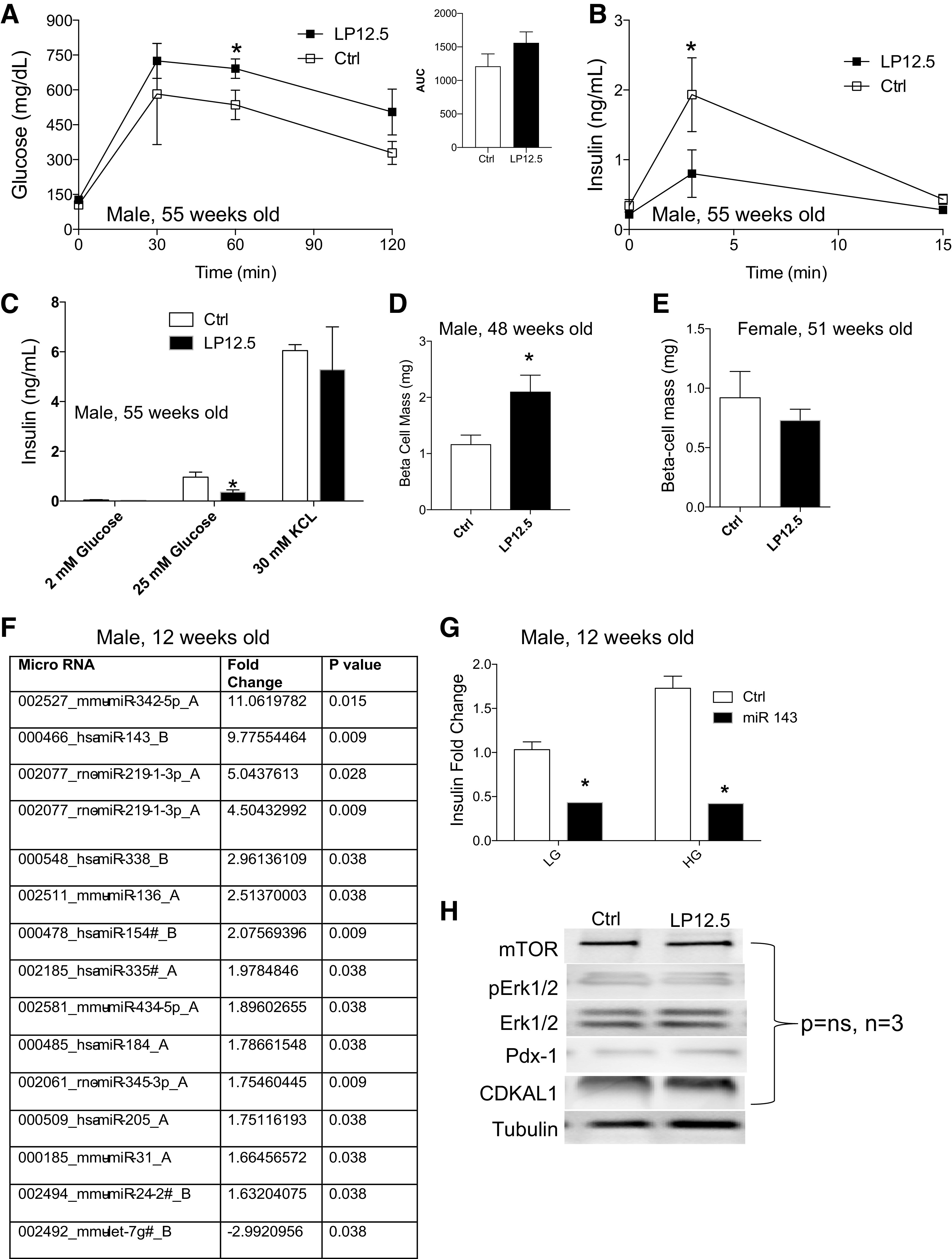Fig. 3.

Reduced glucose-stimulated insulin secretion in aged male mice administered low protein (LP) during the last week of gestation (LP12.5). A and B: in vivo intraperitoneal glucose tolerance tests and glucose-stimulated insulin secretion (GSIS) were performed on 48-wk-old male LP12.5 and control (Ctrl) offspring [area under the curve (AUC), P = 0.2]. C: GSIS in isolated islets from adult LP12.5 and Ctrl male mice, in response to 2, 25 mM glucose and 30 mM KCl for 30 min. β-Cell mass of 48-wk-old male (D) and 51-wk-old female (E) LP12.5 and Ctrl mice. Ctrl, n = 4–5 mice. F: summary of altered microRNA level in islets of adult male LP12.5 mice. Only microRNAs passing the stringent threshold for significant change are shown. Islets were harvested from 12-wk-old LP12.5 and Ctrl mice. RNA was isolated by the MirVana Kit for OpenArray microarray. Quality of RNA was assessed by an Agilent Bioanalyzer (n = 5 mice). G: insulin secretion in primary mouse pancreatic β-cells from 12-wk-old male LP12.5 and Ctrl islets treated with or without miR143. LG, low glucose; HG, high glucose. H: representative Western blot for mTOR, pErk, total Erk, pancreatic and duodenal homeobox 1 (Pdx1), and Cdk5 regulatory-associated protein 1-like 1 (CDKAL1). Analyzed by Student’s t test, 2 tailed and unpaired, *P < 0.05 vs. Ctrl, n = 3–5.
